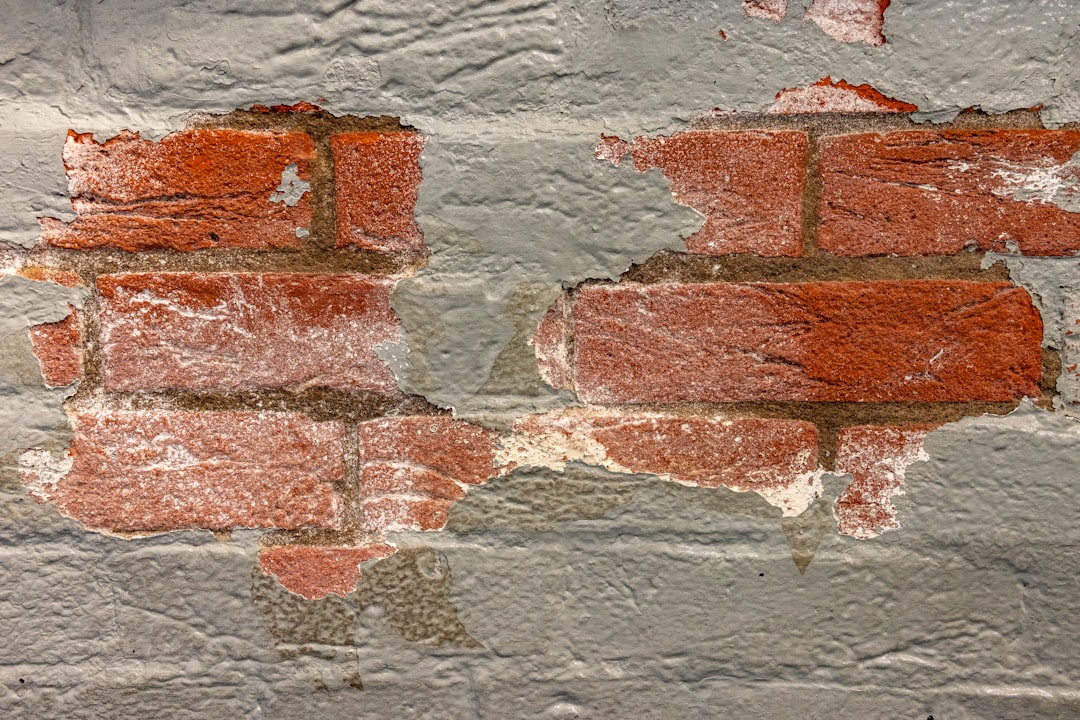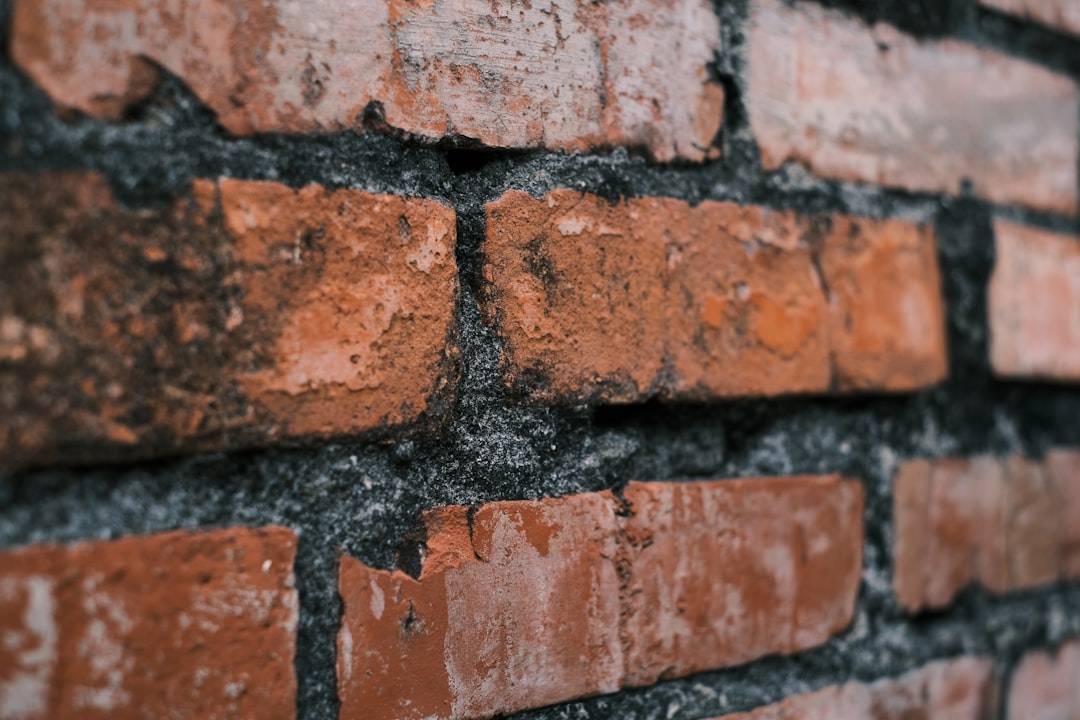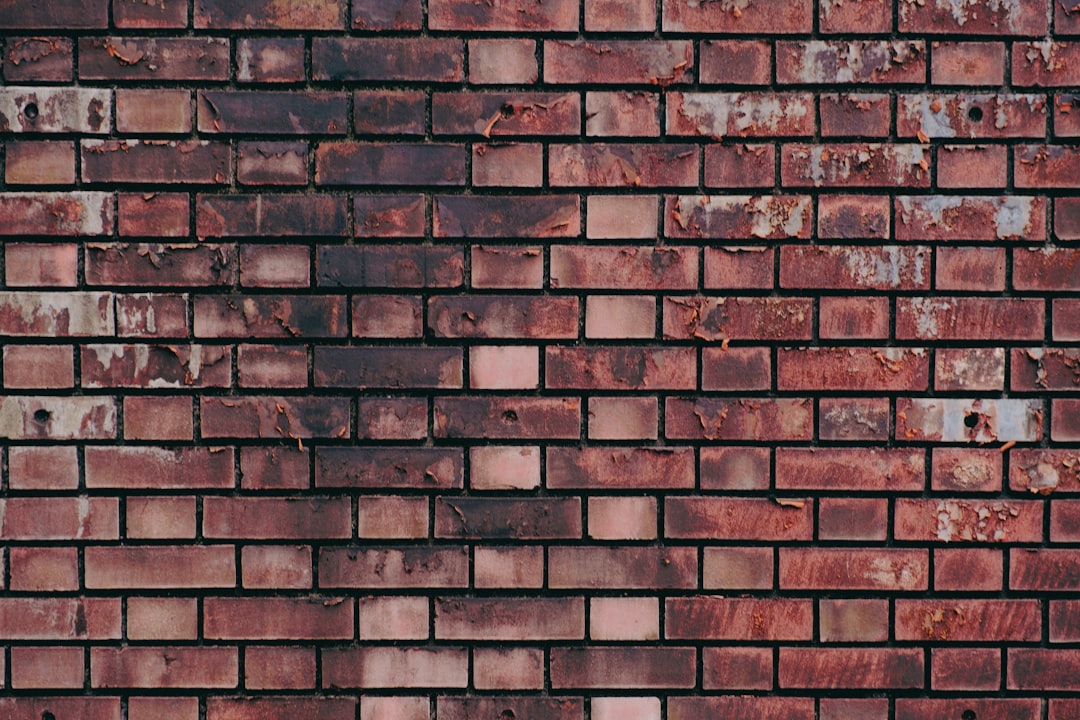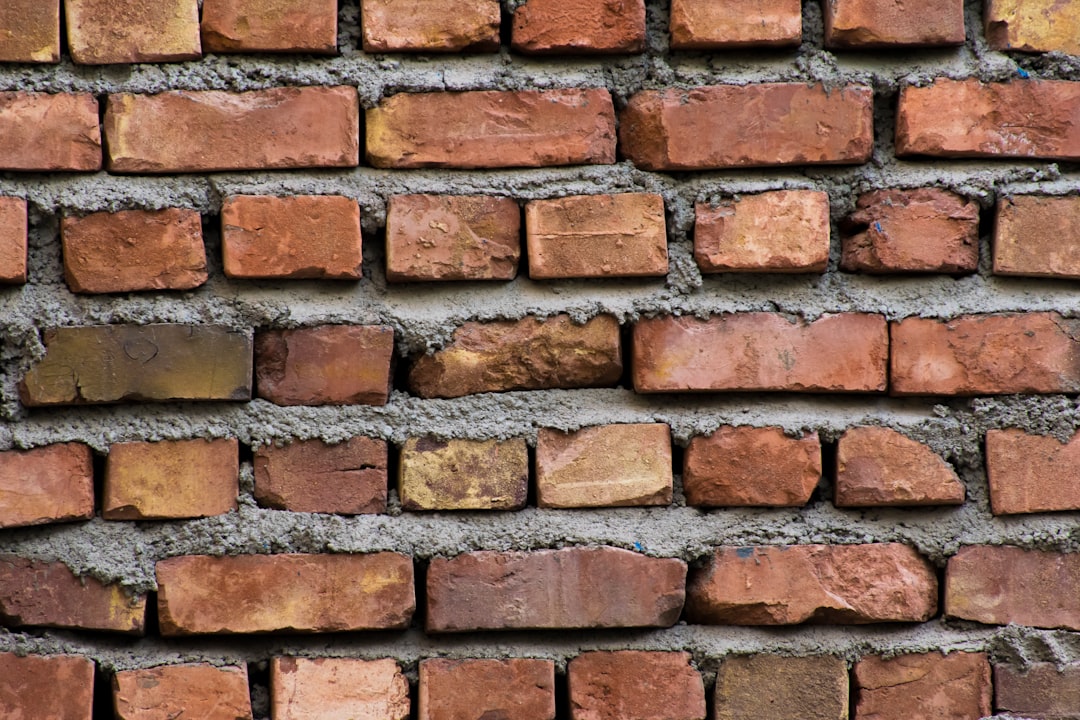

Engage prospects with a scan and streamline customer engagement with FREE QR code marketing tools by Sona – no strings attached!
Create a Free QR CodeFree consultation

No commitment

Engage prospects with a scan and streamline customer engagement with FREE QR code marketing tools by Sona – no strings attached!
Create a Free QR CodeFree consultation

No commitment
In today’s digitally driven construction market, bricklaying services face a major shift: clients are harder to reach using traditional outreach, and missed opportunities often go unnoticed when prospects remain anonymous. Paper brochures and word of mouth still have value, but they do not solve the problem of losing high-value prospects whose interest is never tracked or followed up. Recognizing these challenges, forward-thinking contractors are turning to data-driven strategies that accelerate lead capture, automate project follow-up, and help prevent valuable contacts from slipping through the cracks.
QR codes have emerged as a practical, low-friction solution for bricklaying professionals seeking to bridge the gap between the field and the funnel. Contractors now face the challenge of capturing intent the moment it peaks, whether that is a passerby admiring a job site, a homeowner reviewing leave-behind materials, or a client wanting instant project information. QR code technology empowers businesses to turn these interactions into digital engagements, showcase services, collect reviews, and ensure leads are tracked before competitors can engage. For more details, see this building services guide.
By embedding QR codes across all touchpoints, from cost estimates to completed project signage, bricklaying businesses can make sure every expression of interest is visible, actionable, and measurable. Modern solutions make it possible to link scans directly to CRM entries or retargeting audiences, eliminate lag time in follow-up, and close the gap between the offline site and the online sales process. Below, discover how QR technology addresses persistent industry pain points and learn the essential steps and strategies for turning every scan into meaningful growth.

The way bricklaying services generate and nurture leads is shifting as traditional methods often fail to identify and capture high-value prospects who may never reach out via form or call. Contractors commonly miss out on these opportunities, and slow manual data collection at job sites adds to the churn of anonymous traffic. QR codes provide a frictionless bridge between the physical project and digital engagement, dramatically reducing the risk of lost or delayed leads.
With QR codes, you can transform analog touchpoints into measurable, interactive channels that pull people into your funnel at the precise moment of interest. Replace printed brochures and paper forms with QR-powered experiences that collect data in seconds, route inquiries to the right team member, and trigger automated follow-ups. This upgrade streamlines the path from curiosity to conversion and gives operations leaders new visibility into what is working.
Here’s how to address these common frustrations:
When QR codes are deployed across your marketing materials, on-site assets, and post-project communications, they replace slow, manual processes with fast, digital workflows that capture intent and respect the customer’s time. Homeowners feel more informed, project managers gain better data, and estimators spend more time on qualified opportunities rather than cold outreach.
Example: Replacing paper brochures and manual intakes
Contractors are now driving every interaction through QR codes linked to dynamic, trackable landing pages, ensuring that even fleeting curiosity triggers a digital signal and an actionable lead. A homeowner who passes a beautiful brick facade can scan a yard sign and instantly see a short video, a cost range calculator, and a request-a-quote form. The system records the scan location, pushes a notification to the sales team, and drops the visitor into a nurture sequence if they do not submit the form. No more hoping they remember your phone number.

Bricklaying contractors often face challenges with anonymous passersby and uncontacted prospects, since traditional materials cannot reveal offline-to-online intent. This creates a costly waiting game where you rely on passive form fills or phone calls while competitors who act faster win the job. QR codes convert those unclear, analog interactions into clear, data-rich engagements that build pipeline and improve responsiveness.
The technology matters because it collapses time and distance between interest and action. People do not need to download an app or type a long URL. A scan opens the exact experience you want them to see, whether it is a pricing page, appointment scheduler, or a gallery of recent masonry work. With dynamic QR codes powered by platforms like Sona QR, you can update destinations without reprinting materials. For industry context, explore the building products industry.
QR codes directly address these gaps:
In bricklaying, these benefits apply directly to common touchpoints like appointment cards, yard signs, postcards, direct mail inserts, and invoices. A small QR on an estimate sheet can invite clients to review scope details, sign digitally, and add photos of site conditions. A QR on a completed project sign can play a timelapse, prompt a quote request, and add that visitor to a retargeting audience. The result is a connected journey that respects how people actually research trades today.

Matching each prospect’s intent with the right information is a frequent challenge in masonry and bricklaying. QR codes support multiple formats that align with different goals, from fast contact capture to detailed project information delivery. Choosing the right destination makes a noticeable difference in scan-to-action rates.
Before you create a code, clarify what you want to happen next. If you want an appointment booked, send scanners to a short scheduling page. If you want them to see craftsmanship, feature a curated gallery with clear filters like patios, walls, and chimneys. With Sona QR, you can build and manage all code types from a single dashboard and update links as campaigns evolve.
Popular QR code formats include:
In this vertical, web links and forms are usually the most valuable because they create structured data for quoting and follow-up. Consider static QR codes when the destination will never change, such as a brochure PDF, and dynamic QR codes when you want ongoing analytics, editability, and integration with CRM or ad platforms. Dynamic is the best choice for most growth-focused campaigns.

Bricklaying growth often hinges on intercepting interest as it happens in the neighborhood, at local retailers, and inside the home. QR codes should meet prospective clients where they already are, such as near an active worksite, on materials they keep, or on vehicles they see daily. Strategic placement captures that moment of curiosity and shortens the distance to a conversation. For more ideas, see masonry advertising ideas.
Start by mapping your typical buyer journey. Homeowners may first notice your work on a street, then scan a yard sign to explore prices, then keep your details via vCard, and finally request a quote after discussing with a spouse. Each step benefits from a clear QR destination that answers the next question and invites the next action.
Top placements include:
Analyzing scan data across these placements reveals which neighborhoods, retail partners, and messages deliver the highest-intent prospects. Over time, you can shift budget toward the designs and placements that consistently produce booked estimates and positive reviews.

Fragmented and incomplete lead capture is a chronic issue in bricklaying. QR codes transform scattered touchpoints into a connected system that records interest, automates follow-up, and proves marketing effectiveness. The best use cases focus on accelerating decisions and enriching the customer experience.
A well-structured set of QR programs ensures that every marketing asset has a job. Your yard sign should feed estimate requests, your brochures should funnel to curated galleries, and your invoices should collect feedback and referrals. Each scan creates a digital breadcrumb that you can measure and improve.
You can enrich these use cases by adding light automation. For example, anyone who scans a yard sign but does not complete the form can receive a follow-up email with a simple question such as “Are you planning a patio or a retaining wall?” The response enriches your CRM and signals the next step in your outreach.
Each QR code scan is a signal that combines intent, location, and timing. By placing different codes across the journey, you can automatically segment audiences and tailor your follow-up. This is especially valuable in bricklaying where buyer timelines vary from urgent chimney repairs to long-range patio projects.
Start by defining the audience segments that matter. For residential work, you might separate passersby near a jobsite, homeowners who scan a brochure at home, and retail customers who scan a display at a stone yard. For commercial masonry, segments might include general contractors who scan project signage, property managers who scan invoices, and architects who scan spec sheets. With Sona QR, each code can carry tags for journey stage, location, and use case so your CRM and ad platforms receive clean, actionable data.
Here’s how to operationalize QR-driven audience building:
For bricklaying specifically, consider separate segments for urgent repairs versus aesthetic improvements, for homeowners versus builders, and for first-time scanners versus repeat engagers. A homeowner who scans a “Retaining Wall 101” guide should see follow-up content on drainage and engineering, while a builder who scans a site sign should receive a trade-focused capability sheet and bid contact details.
QR codes act as connective tissue across print, site signage, retail presence, social media, events, and the web. When you modularize your messaging and destinations, each channel nudges people to the next step while feeding back data that improves the entire system. This closes the loop between outreach and outcomes. Get additional QR code marketing tips.
For bricklaying teams, integration means more than boosting scan counts. It means designing a seamless experience where a yard sign leads to a gallery, a gallery leads to an estimate form, an estimate form triggers an appointment, and an invoice invites a review. With a central platform like Sona QR, you can manage codes across channels, monitor performance, and automatically sync scan activity with your CRM and ad platforms.
QR codes serve as the offline onramp to your digital marketing engine. They also unlock a new layer of data collection across channels that were once difficult to measure. With a centralized platform like Sona QR, you can manage all your codes, monitor performance, and sync scan data with your CRM and ad platforms to see the full picture.
A structured rollout keeps your team aligned and ensures every QR code has a clear purpose. Start small with a few high-impact placements, then scale once analytics confirm what works. This approach manages cost while improving the quality of your pipeline.
Use the following steps as a practical playbook. Each step links strategy to tactics so field teams, marketers, and sales can collaborate without confusion. Where possible, automate tasks and reporting so that the program becomes easier to run as it grows.
Clarify intent before you design a single code. For bricklaying services, the most common goals include quote requests, design consultations, showroom visits, review collection, and referral activation. Rank your goals by revenue impact and feasibility, then select one primary goal per code.
Apply this discipline to each placement. A yard sign might focus on estimate requests, a brochure on gallery views, and an invoice on reviews. Clear goals guide your call to action and landing page content, and they allow you to measure success with precision.
Use dynamic QR codes for most campaigns so you can track scans, change destinations, and run A/B tests without reprinting. Dynamic codes also support integration with tools like Sona QR for CRM sync and audience creation.
Static QR codes are suitable for permanent assets such as a safety manual PDF on a jobsite board. For anything growth related, dynamic is the better choice because it preserves agility and data visibility.
Design the code with scannability in mind. Include ample white space, high contrast, and a clear frame or label. Add a short, benefit-driven call to action such as “Scan for a 2-minute quote” or “See this wall get built.” Place the code at eye level when possible and ensure it is large enough for curbside viewing on yard signs.
Include branding elements like your logo and colors so the code looks intentional. Test scannability from different distances, angles, and lighting conditions using multiple devices. A small preflight test reduces field issues and saves reprint costs.
Focus initial rollout on assets linked to missed opportunities and measurable engagement. Good starting points include worksite yard signs, brochures handed out after site visits, direct mail campaigns to specific neighborhoods, and invoices for recent projects to trigger reviews.
Match placement to audience behavior and scanning context. A code on a truck tailgate should be large with a short CTA, while a code on an estimate sheet can lead to a detailed page with pricing options and FAQs. Use unique codes for each asset so you can compare performance.
Use dashboards and analytics to track scan counts, time of day, device type, and conversion outcomes. Monitor drop-off points on landing pages and streamline forms that cause friction. Run simple tests on CTAs, imagery, and page layouts to find the combinations that convert best.
Feed your learnings back into the field. If jobsite signs on corner lots generate more scans than mid-block placements, adjust your installation plan. If gallery pages outperform pricing tables for initial engagement, sequence your content accordingly. Iteration is the engine of ROI.
Real-time tracking and adjustment capabilities let teams act fast and turn insight into advantage. With Sona QR and Sona, an AI-powered marketing platform for identity and attribution, you can test new destinations without reprinting, enrich CRM records automatically, and push high-intent scanners into sales workflows or retargeting audiences.
Many bricklaying teams struggle to prove which efforts influence revenue. Without reliable tracking, you cannot confidently allocate budget or refine placements. QR analytics bridge this gap by linking physical interactions to digital outcomes and, ultimately, to revenue events in your CRM.
At a minimum, you should capture when and where each code is scanned, which device was used, and what action followed. Better still, connect scans to known contacts through forms, calls, or identity resolution so you can see which touchpoints contribute to quotes, bookings, and reviews.
With Sona QR and Sona.com, you can go beyond scan counts. Track micro-conversions, build journey timelines, and attribute pipeline to specific QR placements. Identity resolution ties anonymous scans to known buyers, and integrations with HubSpot and Salesforce enrich your records so marketing and sales see the same story. For a framework on measurement, see single vs multi-touch attribution models.
Sustained performance comes from ongoing testing, training, and systemization. Treat QR not as a novelty, but as a core channel that can be tuned for higher scan rates, better conversion, and cleaner data. Start with a few best practices that fit your most common media and buyer journey.
Bricklaying teams can benefit from standard operating procedures. Train crew leaders on where to place yard signs, give sales reps scripts for promoting scans during site visits, and create a monthly routine for reviewing scan analytics. These habits keep your program aligned with revenue goals.
Two creative deployments to consider: add a QR code to a temporary fence banner that links to a live gallery of the in-progress project, and include a code on invoices that leads to a one-tap review flow plus a referral form. Both placements appear at moments of high attention and can drive measurable outcomes quickly.
QR codes give bricklaying services a vital edge in a market where real-time engagement is often lost between the worksite and the web. By connecting signs, flyers, and in-person interactions to specific digital destinations, contractors overcome barriers of missed leads, slow manual intake, and campaigns with unclear results. The technology turns passive impressions into trackable signals that drive better decisions and faster follow-up.
For bricklaying professionals, this integrated approach means moving from guesswork to clarity. When every asset is a measurable gateway, you see which neighborhoods, retailers, and messages fuel quote requests and reviews. When clients glide from interest to follow-up without friction, satisfaction improves and referrals rise. When analytics tie scans to revenue, you can justify investment and refine your strategy with confidence.
Embracing QR codes in bricklaying services is not just about convenience, it is about filling visibility and attribution gaps that hinder growth in construction. Strategic deployment and ongoing optimization ensure every interaction, whether on-site, in print, or at events, feeds directly into a scalable and measurable lead nurturing process. With Sona QR and Sona.com, you can generate and manage codes, unify analytics, sync data to your CRM, and attribute scans to revenue so your team can act faster and grow smarter. Start creating QR codes for free.
QR codes have revolutionized the bricklaying services industry by turning traditional client outreach into dynamic, measurable growth opportunities. Whether it’s streamlining project access, enhancing customer communication, or providing instant updates on job progress, QR codes eliminate manual hassles and deliver real-time engagement data that transforms every interaction into a powerful conversion tool. Imagine clients seamlessly accessing project details or service quotes with a simple scan—boosting satisfaction and accelerating decision-making.
With Sona QR, you can create dynamic, trackable QR codes in seconds, update your campaigns instantly without reprinting materials, and link every scan directly to business outcomes. This means no missed leads, no wasted marketing efforts—just smarter, more efficient ways to grow your bricklaying services. Start for free with Sona QR today and turn every scan into a new opportunity, a stronger relationship, or a closed contract.
QR codes help bricklaying services capture leads instantly, automate follow-ups, showcase projects, and track customer engagement by turning physical touchpoints into measurable digital interactions.
QR codes provide a frictionless way to capture prospect interest at the moment it occurs, by linking scans to estimate forms, galleries, or booking pages, which speeds up follow-up and reduces lost opportunities.
Effective placements include worksite yard signs, brochures, truck wraps, showroom displays, direct mail, invoices, and event materials to intercept interest at various buyer journey stages.
Dynamic QR codes directing to web links, estimate forms, galleries, vCards, SMS or email triggers, and project documentation are most useful because they allow tracking, updating, and integration with CRM systems.
QR code analytics capture data on scan time, location, device, and user actions, linking physical marketing efforts to digital outcomes and revenue, enabling better budget allocation and campaign refinement.
Define clear goals for each QR code, choose dynamic codes for flexibility, design for visibility and ease of scanning, deploy codes on targeted assets, and monitor engagement to refine strategies.
By using platforms like Sona QR, businesses can sync scan data with CRMs such as HubSpot or Salesforce to automate follow-ups, build audience segments, and trigger retargeting campaigns.
Innovative uses include linking temporary fence banners to live project galleries, invoices to one-tap review and referral forms, and placing QR codes on demonstration bricks or digital blueprints.
The article does not provide specific pricing information for hiring bricklaying services.
Consider the contractor’s responsiveness, ability to provide instant quotes, portfolio of completed projects, customer reviews, and use of technology like QR codes to enhance communication and follow-up.
Technology such as QR codes enables faster lead capture, automation of follow-ups, better customer engagement, detailed analytics, and integration with CRM systems to drive growth and operational efficiency.
The article does not list specific local bricklaying services but suggests using QR codes and digital channels to discover and connect with nearby contractors.
Use Sona QR's trackable codes to improve customer acquisition and engagement today.
Create Your FREE Trackable QR Code in SecondsJoin results-focused teams combining Sona Platform automation with advanced Google Ads strategies to scale lead generation

Connect your existing CRM

Free Account Enrichment

No setup fees
No commitment required

Free consultation

Get a custom Google Ads roadmap for your business






Launch campaigns that generate qualified leads in 30 days or less.
